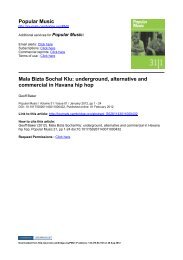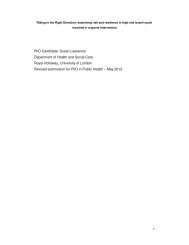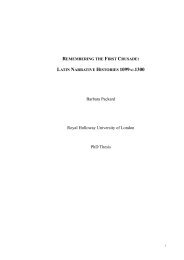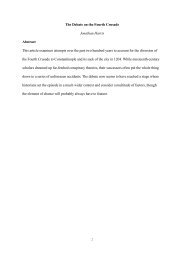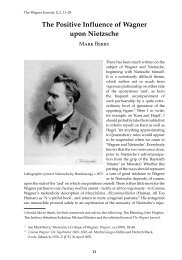Dynamic Capabilities: A Review and Research Agenda
Dynamic Capabilities: A Review and Research Agenda
Dynamic Capabilities: A Review and Research Agenda
Create successful ePaper yourself
Turn your PDF publications into a flip-book with our unique Google optimized e-Paper software.
In contrast, quantitative research is under-developed as evidenced by the smaller<br />
number of key empirical studies identified. Further, most prior quantitative studies<br />
examine a narrow aspect of dynamic capabilities. For example, George (2005) studies<br />
the effects of experiential learning on the cost of capability development <strong>and</strong> Athreye<br />
(2005) focuses on the evolution of service capability given external <strong>and</strong> internal factors.<br />
An exception is the work by Spanos <strong>and</strong> Lioukas (2001) that tests a composite model<br />
integrating Porter’s framework <strong>and</strong> the RBV (though with a particular reference to firm<br />
assets rather than a dynamic capabilities construct). Future quantitative research has two<br />
eminent tasks: (i) To develop <strong>and</strong> validate a multi-dimensional construct of dynamic<br />
capabilities. This can be guided by the component factors we identified in this paper.<br />
(ii) To examine dynamic capabilities in a nomenological network <strong>and</strong> provide a better<br />
underst<strong>and</strong>ing of under what circumstances <strong>and</strong> how firms should direct their resources<br />
<strong>and</strong> capabilities in search of sustained competitive advantage. Our proposed research<br />
model (as shown in Figure 1) can be adopted as a base for future studies.<br />
The managerial ‘take-away’ of this paper is that whilst recognising the differential<br />
positions in resources <strong>and</strong> capabilities amongst firms <strong>and</strong> the different paths toward<br />
success, managers can chart their development of dynamic capabilities using the<br />
common features that we identified, <strong>and</strong> benchmark their practices with industry peers.<br />
However, managers must not evaluate dynamic capabilities as a st<strong>and</strong>-alone target.<br />
Instead, the change trajectory in the external environment, the firm’s historical <strong>and</strong><br />
current strengths <strong>and</strong> weaknesses, its long-term strategic orientation <strong>and</strong> its product-<br />
market positioning must be considered simultaneously in order to effectively channel its<br />
resources toward effective capability development. A second key point is that capability<br />
development is time-dependent. Capability development (such as by investing in R&D)<br />
28






